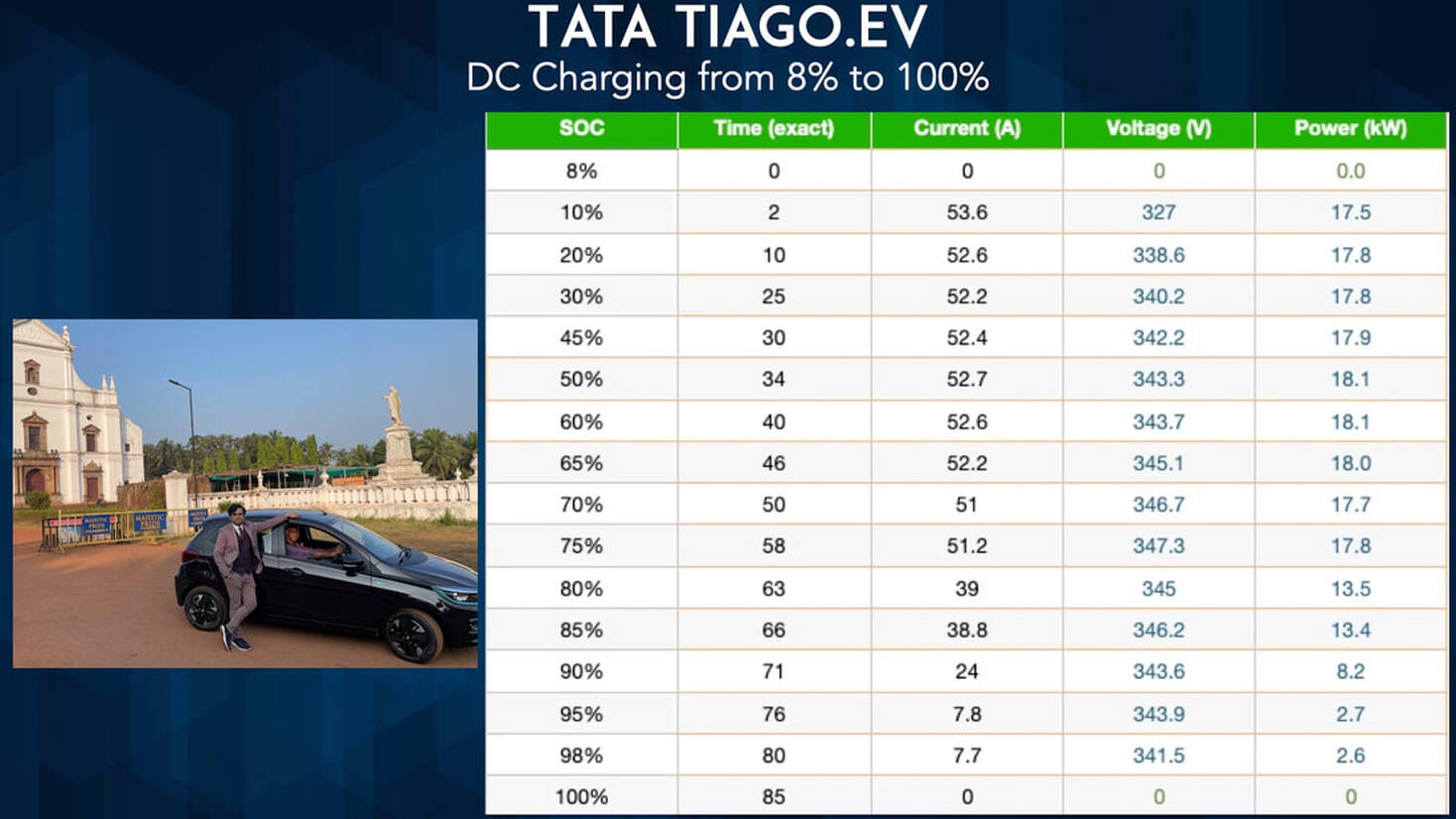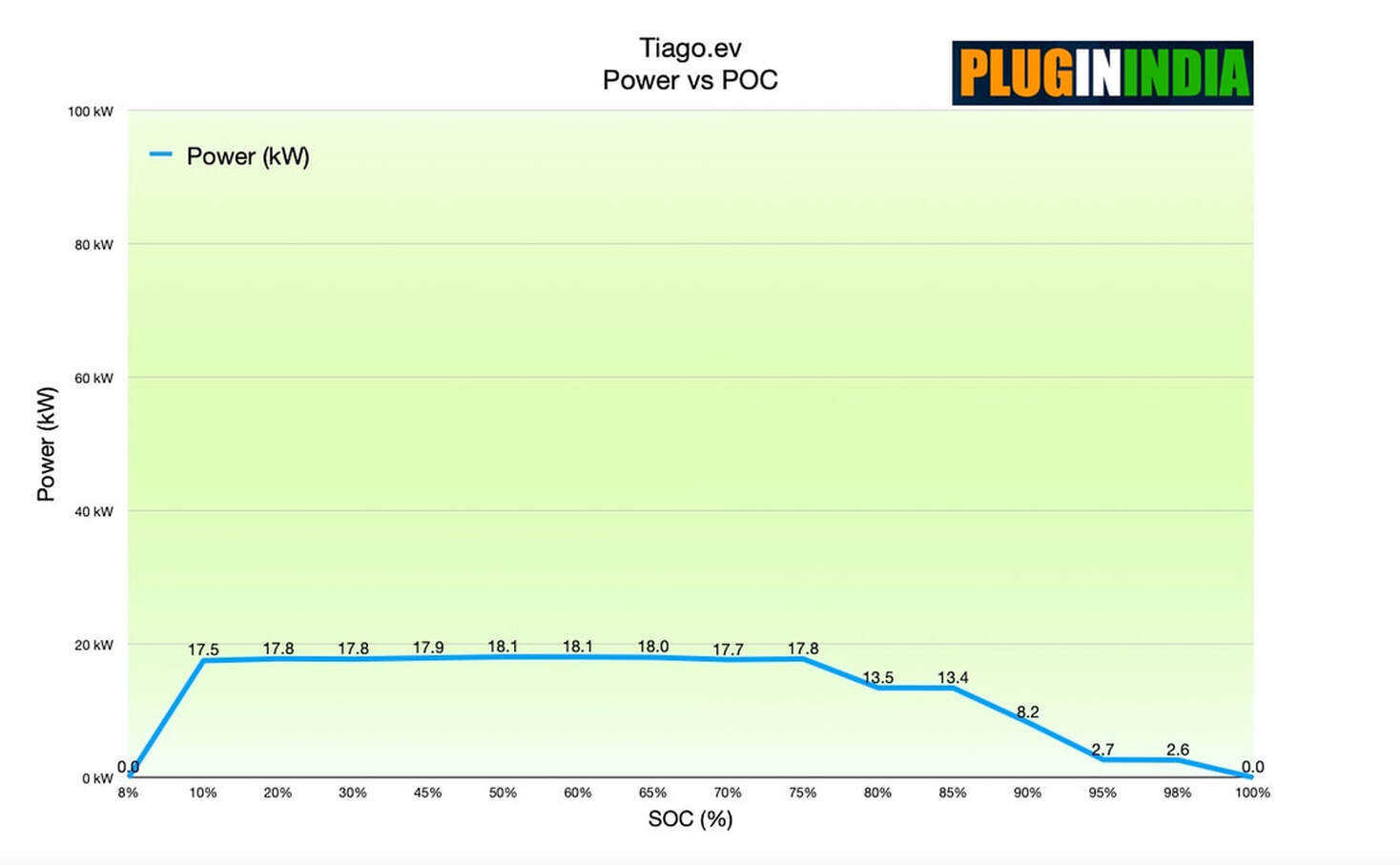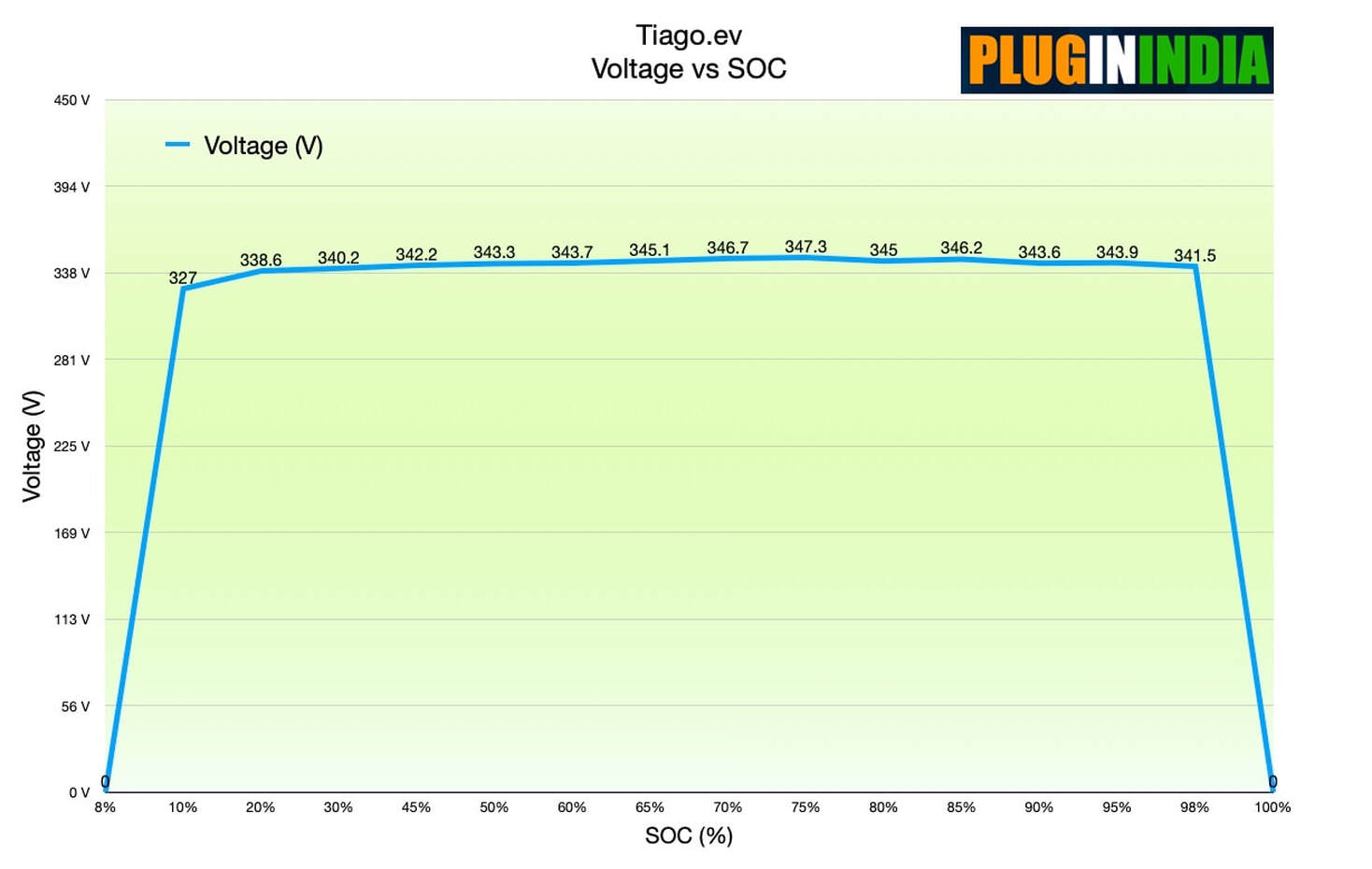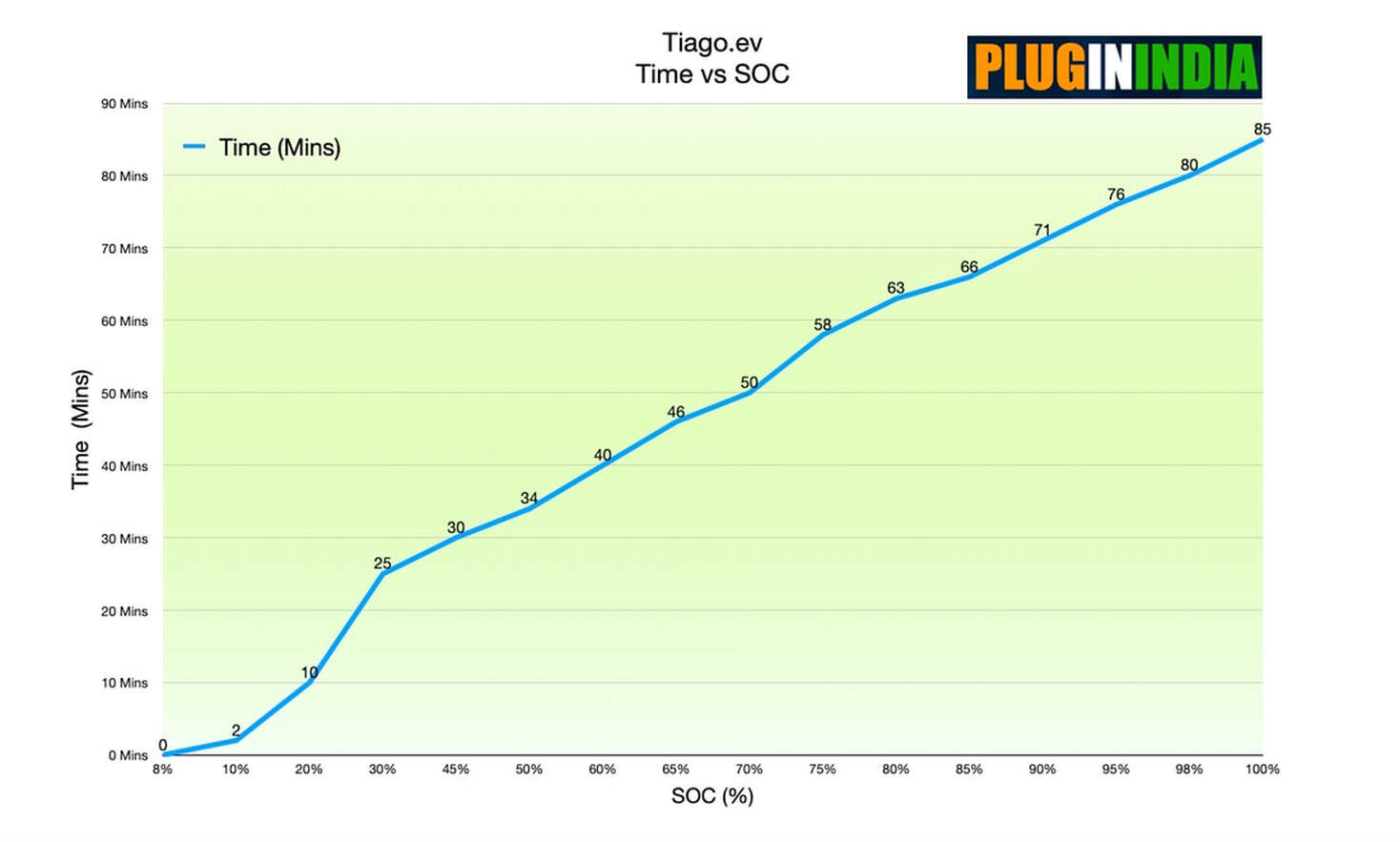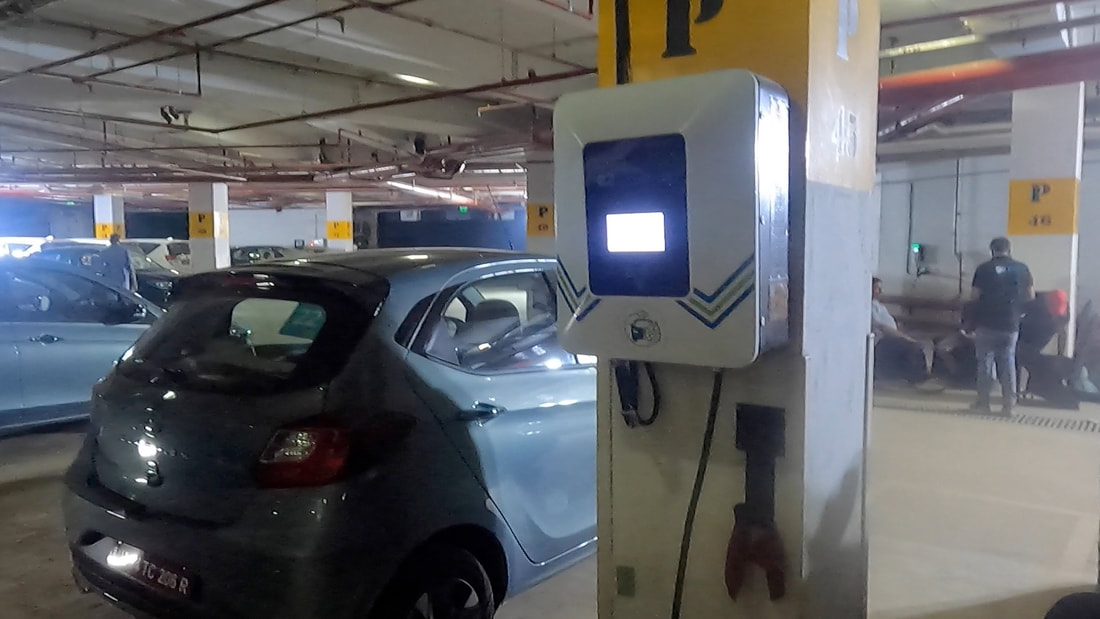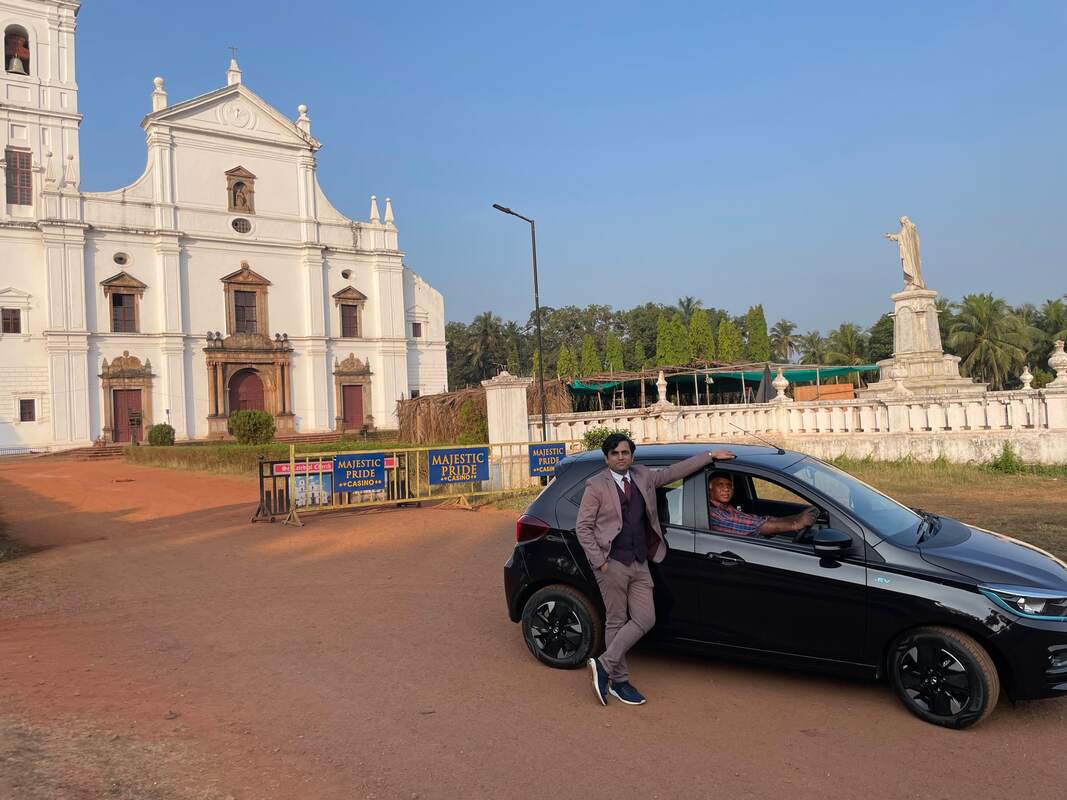By Abhishek & Kamlesh
We document the data from our charging test of the Tiago.ev electric car. We document the the charging rates, the curve of the charging of these two cars and also see how many amps each car takes in! Let's geek out together and have some fun!
We document the data from our charging test of the Tiago.ev electric car. We document the the charging rates, the curve of the charging of these two cars and also see how many amps each car takes in! Let's geek out together and have some fun!
Video: Tata Tiago.ev : DC Fast Charging Test
Let’s talk about what we are working with
- The Tiago.ev has a 24 kWh battery pack.
- The Tiago.ev can DC fast charge at around 18 kW
- The Tiago.ev is built on the Ziptron platform with 400 V architecture.
- The Tiago.ev Max can do around 200 km per charge in cities and 180 km on the highway!
TIAGO.EV
- The Tiago.ev starts charging and as you can see the amperage is ramping up, ramping up until it hits 53 A and remains stable thereafter as you can see in the Tata Power Charging equipment. The pack voltage is around 345 V
- After 20 mins, the current is steady at 52.2 Amps. It has been steady all the way for 20 straight minutes. The SOC is 30%, Voltage has been steady at 342.2 V. The power being delivered is 17.8 kW
- At 85% SOC, the voltage has been steady from the start at around 346.2 V, the current is dropping off significantly at 38.8 Amps
- We usually charge our electric cars upto 90% all the time, whenever we do road trips, as the charging speed reduces dramatically after the SOC is 90%. It makes sense to unplug and drive at 90% and move on to the next stop. But for this exercise to complete the graph, we will let it charge upto 100%
- SOC of the Tiago.ev is 95% and the readings are as follows, the voltage is still maintained at 343 V, the current is dropping off significantly at 7.8 Amps. This power has been reduced to 2.7 kW. This shows that its not worth waiting after 90% SOC at a fast charger.
Analysis
- Let's look at the graph where we show the Power at which the Tiago.ev was charging from 8% to 100% SOC at a 30 kW Tata Power Charger. As you can see the Tiago.ev with the 24 kWh battery pack can peak at around 18 kW (kiloWatts). So even if you go to a 60 kW or a 120 kW DC charger, the peak will always remain at around 18 kW. After 80% the Tiago.EV’s BMS accepts a lower power and you can see the rate of charging decreases rapidly. After 90% you are charging speed plummets and after 95%, it’s slower than 3.3 kW AC charging.
- Many of you may wonder why not charge faster? Why not charge at 30 kW or 60 kW and achieve faster charging times? The answer to that question boils down to one thing - protecting the battery pack. What we have observed is that electric car and BMS designers try to DC Fast charge at around 1C rate and if cars have a higher voltage architecture, then they charge at 2C. The C-rate is the unit battery experts use to measure the speed at which a battery is fully charged or discharged. For example, charging at a C-rate of 1C means that the battery is charged from 0-100% in one hour. A C-rate higher than 1C means a faster charge; for example, a 3C rate is three times faster, so a full charge in 20 minutes.
- In India most electric cars with the 400V architecture charge at around 1C. The only car we have seen charging at 2C was the KIA EV6, which uses a 800V architecture. Higher C-rates increase the rate of degradation in the battery, reducing range and shortening the vehicle’s lifespan. Faster charging can also cause dangerous dendrites to form. These hurt the battery’s lifespan, can lead to cell failure, and in some extreme cases have been known to cause fires.
- Now that we have understood the limitations, let’s look at the next graph, the current is being pumped into the Tiago.ev's battery. The more current you see here, the faster you can change the electric car's battery. As you can see the Tiago.ev hits peak current pretty quick to around 17.5 Amps when we started charging. And then hits a peak of 18.1 amps at 60% SOC. After 75% SOC, you see there is a decrease in the current demanded by the BMS. And after 90% there is a dramatic drop in the current demand.
- The voltage graph confirms that the Tiago.ev uses the 400V architecture and it remains steady from start to end.
- These graphs tell me that the Tiago.ev's BMS has a very similar design to the Nexon EV Max. They don't want to cause stress to the LFP cells as more heat builds up as the State of Charge increases and the BMS is playing safe by reducing the current supply.
Final Words
This was very interesting. So have learnt that the Tiago.ev will fast charge from 10% to 50% in 30 mins - that makes it very practical for quick topups. Also it does not make sense to charge upto 100% at fast chargers. Top up to 80% and get going. But dont forget to slow charge upto 100% at home!
This was very interesting. So have learnt that the Tiago.ev will fast charge from 10% to 50% in 30 mins - that makes it very practical for quick topups. Also it does not make sense to charge upto 100% at fast chargers. Top up to 80% and get going. But dont forget to slow charge upto 100% at home!

